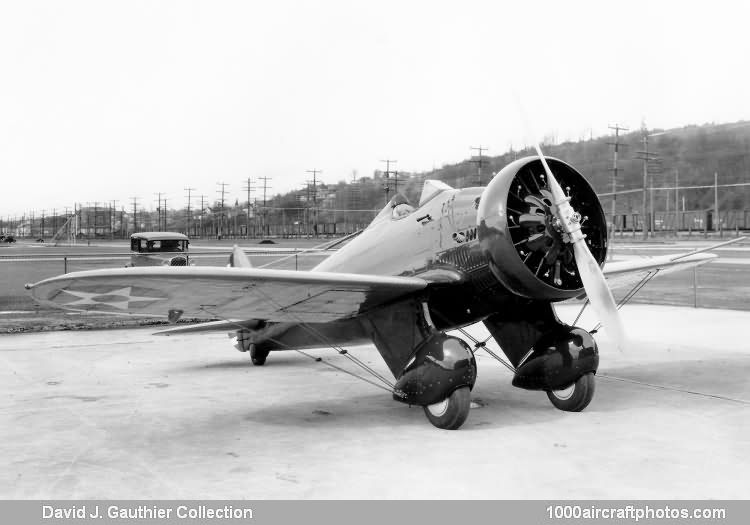12/31/2011. Remarks by Johan Visschedijk: "The Model 248 was an entirely new fighter design incorporating both Boeing ideas and certain features proposed by the USAAC. Design work was begun at Boeing expense in September 1931, and an USAAC Bailment Contract was signed on December 5, 1931, stipulating that the USAAC would provide engines and instruments for three test aircraft (c/n 1678 to 1680) with the experimental designation of XP-936.
Construction began in January 1932, and the first aircraft was flown on March 20. The second was not flown, but was shipped to Wright Field for static test before the first was completed. The third was sent to Selfridge Field, Michigan, for service testing. Shortly after testing of the two flyable XP-936s began, the USAAC bought them under a standard purchase contract signed on June 15, 1932, and assigned the designation of XP-26 and allotted the s/n 32-412 to 32-414. The designation was soon changed to the service test designation of Y1P-26, and eventually to plain P-26.
The P-26 was an entirely new design for Boeing, and while structural features drew heavily on such other all-metal models as the Monomail, the models 202 and 205 fighters, and the Model 218, the use of wire-braced wings and a non-retractable landing gear seemed to be a step backward in view of recent company experience with retractable landing gears and cantilever wings. However, the external bracing allowed a lighter structure and wires produced less total drag than rigid struts. The fixed landing gear added drag but reduced weight and structural complexity and provided a structurally efficient low anchor point for the flying wires.
The rear portion of each landing gear unit consisted of an inverted tubular bipod fastened to the front and rear wing spars. The flying wires were attached to the apex, and the wheel pivoted about the apex on an arm, with the landing loads being absorbed through a shock absorber strut connecting the wheel axle to the front spar. The entire lower portion of the landing gear was enclosed by streamlined wheel fairings, or pants.
The XP-26/Y1P-26/P-26 prototypes were followed by 136 production aircraft: 111 P-26A, 2 P-26B, and 23 P-26C, all nicknamed "Peashooter".
